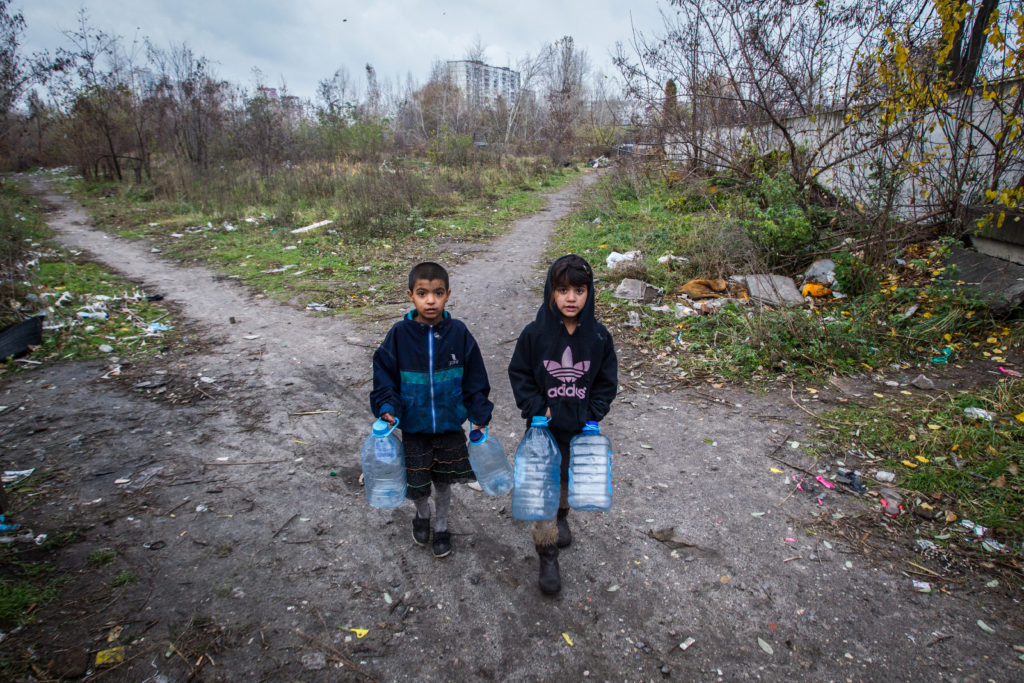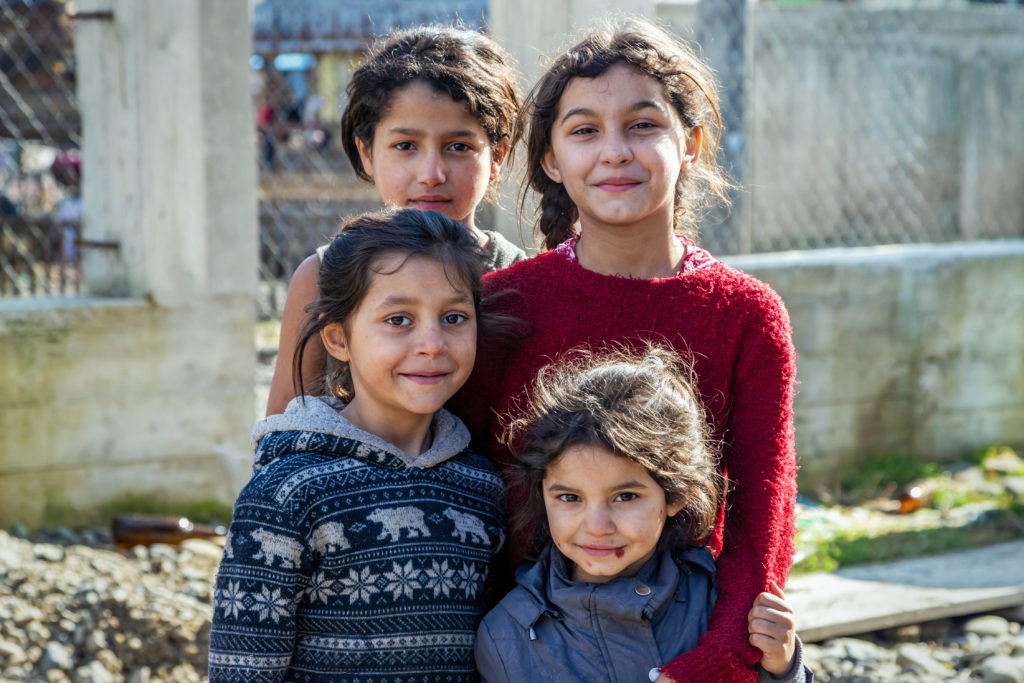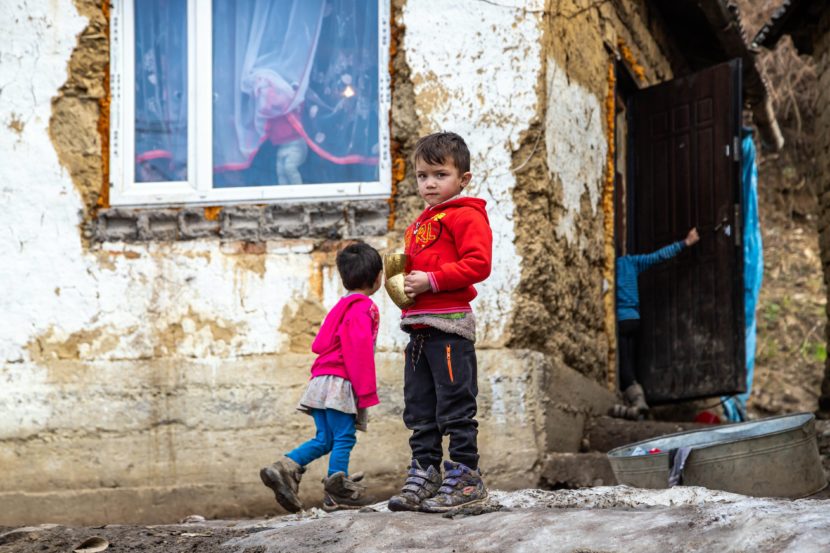On 5 April 2023, the Committee of Ministers adopted a new Recommendation to the 46 Member States of the Council of Europe to ensure substantive participation, representation and inclusion of Roma youth in all spheres of society and decision-making processes, and well as to combat structural racism. This is an important step forward for Roma children and youths to promote their voices to be heard and their needs to be addressed.
The current situation for young Roma people in Europe
In most European societies, young Roma people have a hard time asserting their rights and affirming their identity and ethnic belonging. Poverty, exclusion and lack of opportunities have imposed challenges on Roma communities in accessing their human rights (Roma Youth, 2023). Roma children and youths are exposed to even greater challenges: school dropouts and absenteeism, forced evictions, forced begging, street children, early/child marriage, domestic violence, human trafficking and prostitution as some of the main ones (Roma Youth, 2023).
Supporting and promoting the participation and inclusion of Roma young people is central to responding to the challenges faced by Roma youth across Europe, particularly in relation to their empowerment, and participation in policy decision-making processes and structures at the European level (Youth Roma, 2023).
In this context, the Committee of Ministers has issued a new Recommendation to the 46 Member States of the Council of Europe to ensure substantive participation, representation and inclusion of Roma youth in all spheres of society and decision-making processes, and well as to combat structural racism (Roma Youth Participation, 2023).
The legal framework of Roma Youth Participation
Recommendation CM/Rec(2023)4 represents a turning point for Roma youth participation, whose historical roots go back to 2010 when the “Strasbourg Declaration on Roma” was adopted by the Member States of the Council of Europe.
Since then, many other recommendations have enriched the legal framework on several topics which affect Roma communities across Europe, such as intercultural integration (Recommendation CM/Rec(2022)10), the inclusion of the history of Roma and/or Travellers in school curricula and teaching materials (Recommendation CM/Rec(2020)2), access to justice (Recommendation CM/Rec(2017)10), the nationality of children (Recommendation CM/Rec(2009)13) and many others.
Moreover, this recommendation is in line with the Roma Youth Action Plan which gives priority to human rights and intercultural dialogue as responses to discrimination and antigypsyism, together with the development and capacity building of Roma youth organisations and movements (Roma Youth Action Plan, 2011). Finally, Roma youth participation is also a key element according to the Strategic Action Plan for Roma and Traveller Inclusion (2020-2025) (Strategic Action Plan for Roma and Traveller Inclusion (2020).
Which are the main issues and solutions targeted by the Recommendation?
Focus on the intersectional approach
The Recommendation targets discrimination that affects Roma communities from different perspectives: social, economic, cultural, political and civil rights, by adopting an intersectional approach. In this sense, it affirms that all policies, measures and programmes related to this recommendation should respect the diversity of Roma communities addressing, in particular, the intersectional discrimination faced by Roma girls and women, LGBTI+ Roma, Muslim Roma and young Roma people living in isolated and rural communities (Roma Youth Participation, 2023).
To make this objective possible, it is important to tackle structural racism, inequities and policy gaps which hinder substantive participation, representation and inclusion of young Roma people in public and political life, in spaces of media, arts and culture, and in decision-making processes and structures at all levels: institutions, schools, non-governmental organisations (NGOs) or political parties, at the local, national and international levels.
In fact, structural racism negatively impacts Roma youth’s participation in civic and political processes and structures, self-esteem, pride and well-being, their transition to adulthood, their trust in the fairness of institutions, and their readiness to embrace their roots and cultures (Recommendation, 2023).
Training on Roma history, culture and antigypsyism
“Those that fail to learn from history are doomed to repeat it.”
– Winston Churchill
To avoid this, it is essential to promote acknowledgment, remembrance, memorialisation and history teaching about the Roma victims of the Holocaust and other forms of State-sponsored injustices, such as slavery, forced transfer of Roma children from their parents to foster care/adoption and forced sterilisation of Roma women (Recommendation, 2023).

Member States should implement courses on anti-racism, intersectional discrimination and intercultural learning for representatives of institutions. Moreover, civil servants with Roma and non-Roma backgrounds should be provided with training and competencies to prevent and combat institutional racism.
Communication is key
Communication plays an important role. In fact, Member States should ensure that relevant information is also available in the Romani language, are Roma-gender-sensitive and include young Roma people living in isolated and rural communities. Member States should combat digital exclusion by supporting and funding education in digital literacy, establishing local digital access points and providing access for isolated communities and “digital deserts” to the internet.
Building strong partnerships
Member States should work with equality bodies and national human rights institutions, in co-operation with Roma associations or individuals, to strengthen their tools and actions to prevent and combat discrimination, intersectional discrimination and other manifestations of structural racism and antigypsyism.
States parties to the Council of Europe should support and strengthen the capacity of Roma youth-led organisations, groups and initiatives and Roma youth-focused organisations and youth centres, as spaces for exercising citizenship, promoting youth work and non-formal education/learning and expressing and fostering their cultural identity, language and history.
Member States should also ensure equal access of Roma youth to internships, traineeships and fellowships in official institutions at the national and local levels and support youth assemblies, councils, school and student councils and unions, NGOs, youth structures of political parties and other relevant youth structures and consultative bodies.
What can be done further by civil society?
This invisibility of Roma young people undermines their potential to reverse embedded marginalisation and discrimination. It is essential to enhance their political participation and representation to bring Roma citizens closer to local, national and European decision-making bodies and improve their active participation and interaction with public administration and their presence in the public sphere (Strategic Action Plan for Roma and Traveller Inclusion, 2020).
Some joint programmes funded by the EU or the Council of Europe, such as ROMED, ROMACT, ROMACTED, have offered the chance to share some best practices to support local government in including Roma young people to participate in the decision-making (Strategic Action Plan for Roma and Traveller Inclusion, 2020). For instance, local governments have been provided with technical assistance to increase the capacity of the authorities for sustained policy engagement and also to empower Roma citizens to enhance their active participation in political and public life.
Also, Roma Political Schools are another example of inclusion and participation for young Roma citizens which were born with the idea of bringing Roma and Traveller citizens closer to local, national and European decision-making bodies, including Roma and Travellers who intend to stand for election at local, national or European level.
Civil society, including mainstream youth councils and organisations, are invited to contribute to the implementation and evaluation of this recommendation, which will be examined in five years (Roma Youth Participation, 2023). Raising awareness on the importance of Roma youth participation is the first step to promoting a digital and present space for Roma and non-Roma children and youths to express their views, ideas and concerns about the reality they live in and how to better shape the future of Europe and the world.

We at Humanium are strongly engaged in promoting a safe and informative digital space to contribute to raising awareness on the importance of the Roma youth to be heard at any level of society. Join Humanium by sponsoring a child, making a donation, or becoming a member or a volunteer!
Written by Arianna Braga
References:
Recommendation (2023). Recommendation CM/Rec(2023)4 of the Committee of Ministers to member States on Roma youth participation, adopted by the Committee of Ministers on 5 April 2023 at the 1462nd meeting of the Ministers’ Deputies. Retrieved from the Council of Europe at https://search.coe.int/cm/pages/result_details.aspx?objectid=0900001680aacef2, accessed on 15 April 2023.
Roma Youth (2023). Roma Youth / Children. Retrieved from the Council of Europe at https://www.coe.int/it/web/roma-and-travellers/roma-youth-/-children, accessed on 15 April 2023.
Roma Youth Action Plan (2011). Roma Youth Action Plan (2011-2019). Retrieved from the Council of Europe at https://rm.coe.int/168046d02c, accessed on 15 April 2023.
Roma Youth Participation (2023). Roma Youth Participation – Recommendation adopted by the Committee of Ministers. Retrieved from the Council of Europe at https://www.coe.int/en/web/youth/-/roma-youth-participation-recommendation-adopted-by-the-committee-of-ministers, accessed on 15 April 2023.
Strategic Action Plan for Roma and Traveller Inclusion (2020). Strategic Action Plan for Roma and Traveller Inclusion (2020-2025). Retrieved from the Council of Europe at https://rm.coe.int/coe-strategic-action-plan-for-roma-and-traveller-inclusion-en/16809fe0d0, accessed on 15 April 2023.


